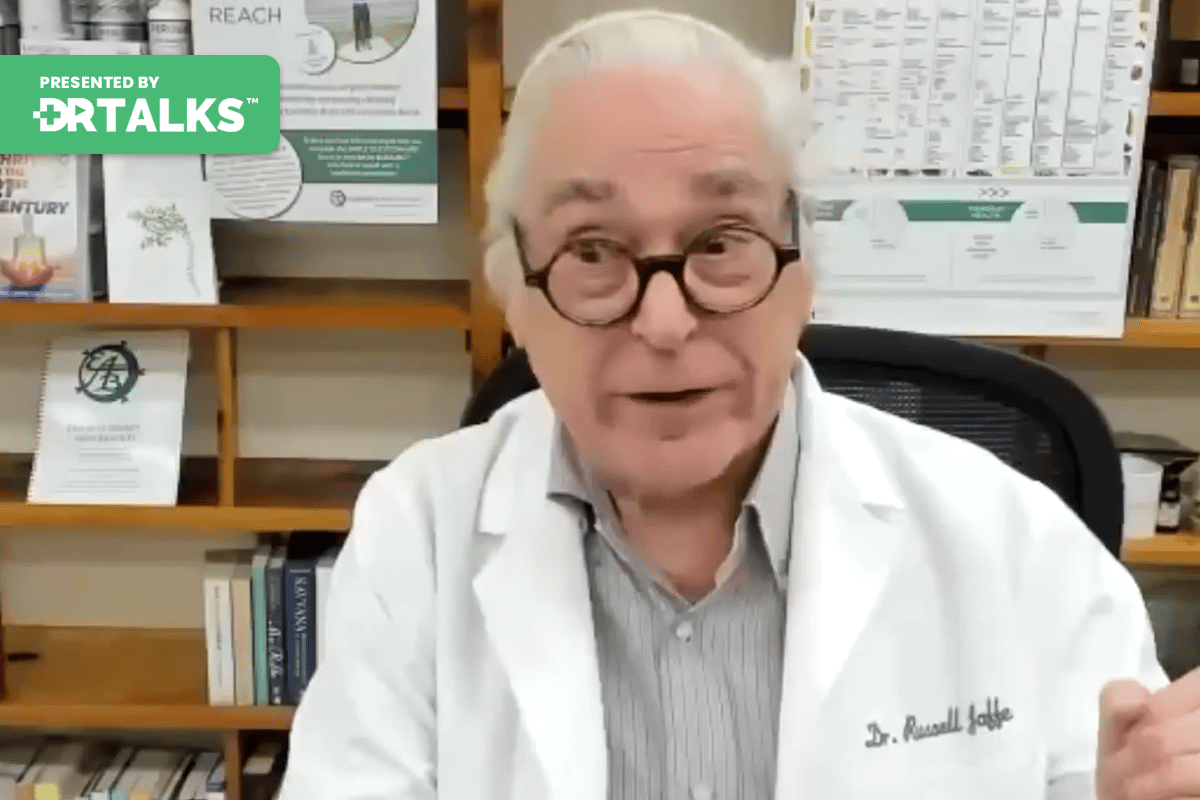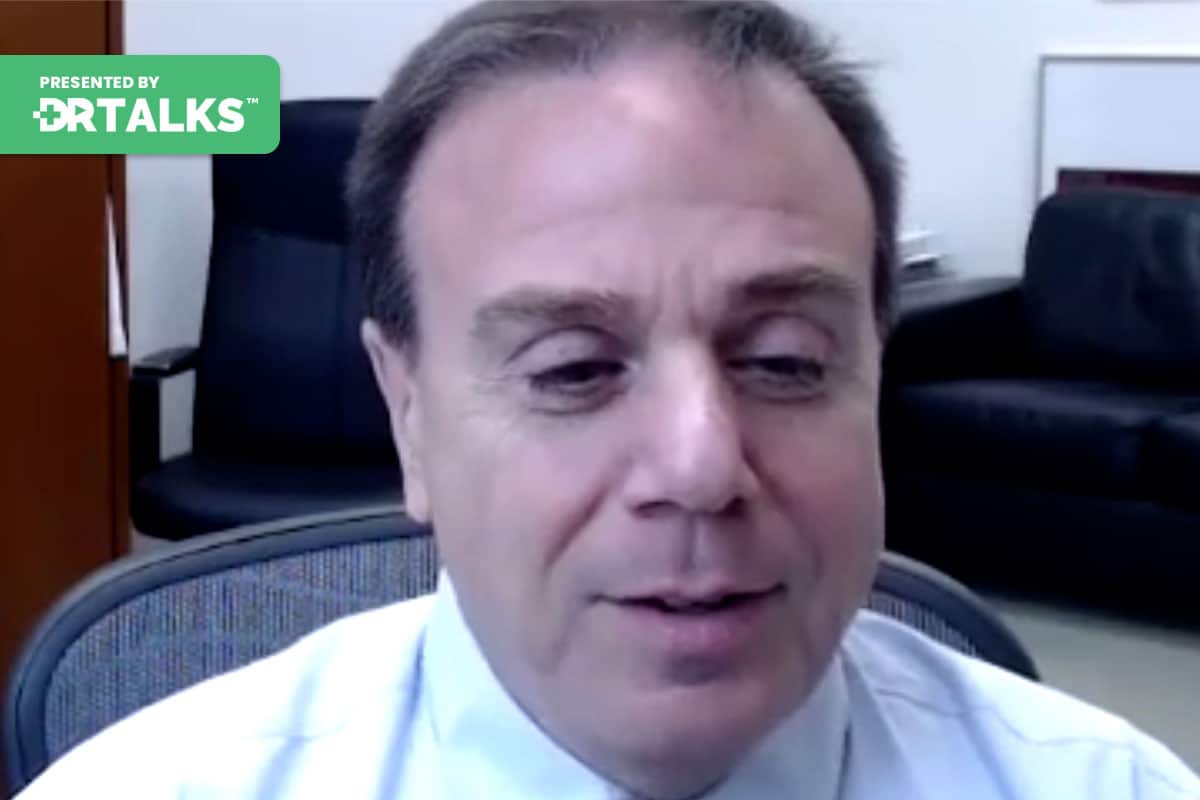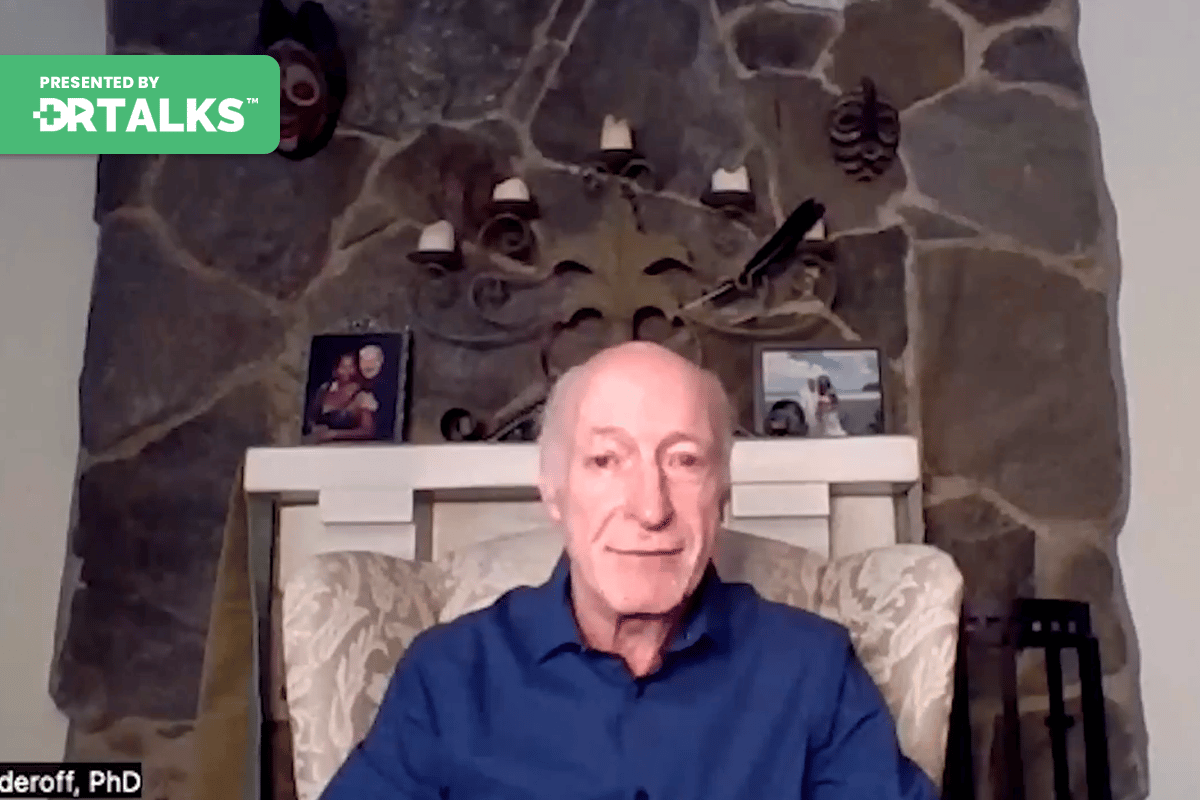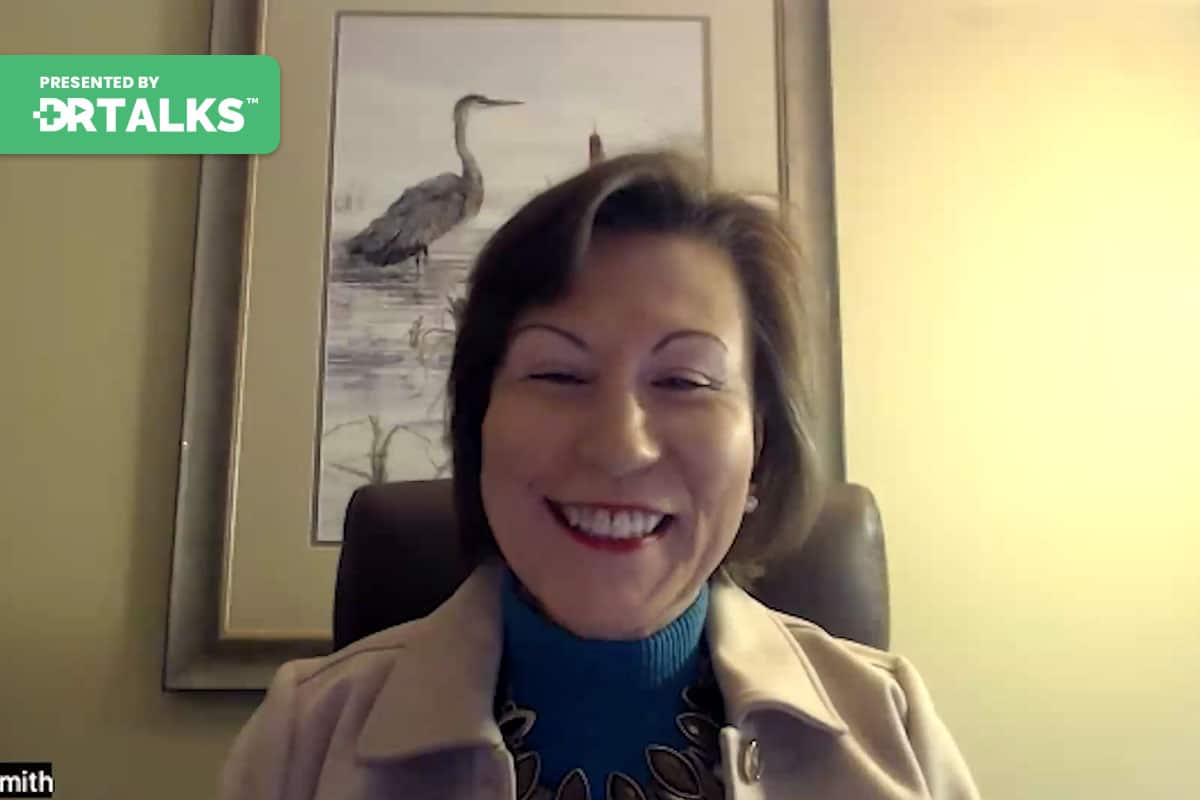Join the discussion below
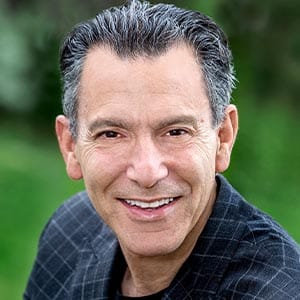
Joel Kahn, MD, FACC of Detroit, Michigan, is a practicing cardiologist, and a Clinical Professor of Medicine at Wayne State University School of Medicine. He graduated Summa Cum Laude from the University of Michigan Medical School. Known as “America’s Healthy Heart Doc”. Dr. Kahn has triple board certification in Internal... Read More

Russell M. Jaffe, MD, PhD, CCN
Dr. Russell Jaffe received his BS, MD and PhD from the Boston University School of Medicine, completed residency training in clinical chemistry at the National Institutes of Health and remained on the permanent senior staff before pursuing other interests, including starting the Health Studies Collegium think tank. He is the... Read More
- Cardiovascular disease is a culmination of repair deficit, oxidative damage, and metabolic acidosis
- There are 8 crucial functional predictive tests need to be used rather than routine known tests to be able to discern risks to cardiac disease
- Nature, nurture, and wholeness – using the Physiology first model for optimum cardiometabolic support
Joel Kahn, MD, FACC
Alright, everybody, good day to you. Please stand, sit move, but do not leave your screen, whatever you’re watching, you’re gonna have one of the most fascinating and provocative topics and interviews we’ve done and if you don’t know, Dr. Russell Jaffe, you’re gonna love him at the end of this segment and you’re gonna want to follow him, you’re gonna want to read books and maybe explore his vitamin company. And I say that unabashedly because I’m one of the biggest fans, Bachelor’s MD, PhD, Boston University, advanced training at National Institutes of Health, advanced training in anatomic pathology plus an enormous amount of Eastern medicine, formal training, acupuncture mind, body, a very unusual combination of solid academic, Western medicine and very ancient and healing Eastern medicine that culminated him writing many papers, many books, a think tank, the health collegium and a wonderful integrated vibe company called Berque, B E R Q U E. So I’m a big fan of and have been through the certification process, which I encourage anybody in the health field to explore. It was just fascinating. If you want to know about acid base load and many other topics, Dr. Jaffe, maybe the world expert on, so welcome, welcome, you’re gonna blow apart everybody’s thinking on heart disease today, right?
Russell Jaffe, MD, PhD, CCN
I’m gonna try.
Joel Kahn, MD, FACC
Yeah, but it in a thoughtful and academic way. I mean, I said to somebody I interviewed, you can’t talk about reversing heart disease unless number one, you can measure it and number two, you understand why it develops and then you can apply strategies to halt or reverse what’s driving it and you’re gonna. We had some great imaging talks because that’s how we can actually measure. And now actually document reversal in this current deck more accurately than ever. But you’re going to tell us to rethink the very origin of cardiovascular disease predominantly atherosclerosis. So take it away. Talk about repair deficits, oxidative damage, metabolic acidosis to a general public audience.
Russell Jaffe, MD, PhD, CCN
Well, thanks for the opportunity. Yes, I am cross trained. I was curious and skeptical to feel to find to explore to research to document that we are looking far downstream. We look through the lens of the pathologist. Now, I’m a clinical pathologist. Not an atomic pathologist, but I’m a clinical chemist, pathologist. Doubly board certified. But what I discovered along with the cross training was that causes are very different than symptomatic consequences. And if you treat the symptoms, you will never ever get to the cause. Now, what’s the cause? The cost is too much bad and not enough good. What does that mean? The cause of atherosclerosis, coronary artery disease? All cardiovascular diseases stem from sugar and balance. You probably know about that from hemoglobin A one C but then inflammation, which is really repair deficit. If you look at inflammation from the lens of the pathologist, you see five different harms and hopelessness when you see the opportunity to repair deficits and remove the consequences, the symptoms go away when the connective tissue, which means collagen and elastin are repaired and the rest of you is repaired in that process because it’s all of us. Mind and body. Yes for full disclosure. I’m a man of science and a man of spirit and I find them complimentary not competitive.
Joel Kahn, MD, FACC
So I think everybody listening, you know it’s just fascinated by what you just said. And is also probably familiar at least broadly with the term inflammation. The middle word is flame. The immunological system maybe specifically that which is geared to react to cardiovascular pathology is overact But because there is pathology going on. But when you talk about repair deficit, are you talking about trace mineral deficiencies, nutritional deficiencies, genetic disposition have weak collagen which is the structure of arteries.
Russell Jaffe, MD, PhD, CCN
92% of lifetime health is epigenetic lifestyle 8% is transgenerational influences and genetics. So I’m gonna talk mostly about epigenetic lifestyle because if you get that right it corrects most of the genetic problems as well. So to be specific we start with four self assessments which define whether you are in balance or out of balance and then we move on to eight. Just eight tests cover all of lifestyle epi genetics. All of the 92% you can do something about. And we use those eight tests to either we interpret those eight tests based on the best outcome goal value. I don’t even look at the statistical range from the lab because it confuses me but I want to know whether your hemoglobin A1C.
Is less than 5% whether your HSCRP is less than 50.5, whether you’re homocysteine is less than six whether your lymphocyte response essay which my lab does specializes in whether you’re tolerant or intolerant to what you’re eating because what you’re eating might be eating you. Then you need to know your vitamin D. You need to know how much acid is coming out in the urine first in the morning after rest. You need to know what your omega three index is. And then there’s an odd test, a urine test and easy to do test called 8-Oxoguanine which measures damage in your D. N. A. And in answer to your question it depends on how much antioxidant
you need, how much minerals you need, how much anti nutrients you’re taking in. You want to reduce the anti nutrients you want to increase the good protective nutrients. A score bait is the maternal antioxidant that chaperones and restores all other antioxidants. So we developed something…
Joel Kahn, MD, FACC
Vitamin C comes in different versions and you know,
Russell Jaffe, MD, PhD, CCN
Oh no, I’m only talking about nature’s ascorbate. I’m only talking about nature’s vitamin C. I’m only talking about fully buffered fully reduced L ascorbate most of what you get on the shelf. Even in the health food store is vitamin C. It is vitamin C. But it’s damaged. It’s damaged because it’s made in air, not under a nitrogen blanket it’s damaged because ascorbate requires healthy low oxidation state. You can make tons of vitamin C. That is damaged. And I don’t recommend. I’m only talking about nature’s of score bait which means fully buffered, fully reduced L ascorbate as in not D ascorbate not 50% D. Which is the synthetic version of vitamin C. Very cheap but half of it doesn’t get into your body and it’s irritating to the digestive track. So you must have nature ascorbate And I will talk extensively if you want about nature’s version of antioxidants and what does that mean? And minerals and what does that mean? And co factors and what are the essential co factors. And what does that mean? Because this can be explained in simple language. The chemistry that’s a bit complex. I’m not going to get into electron donors and electron recipients if you want to talk to me about that, I’m happy to talk about that on another occasion.
Joel Kahn, MD, FACC
Well, you know, again, we’ve already had a university hour of information in our 1st 10, 12 minutes. I want to go a little deeper with you in your very well thought out eight predictive biomarkers of health and longevity. I will tell you I have to my right on the wall of my office, your handout on those eight. And I review them with almost every patient and I tell them why we’re getting advanced labs because these are predictive science based measures. But you said something about five minutes ago. First of all, I think you called it. Four pillars of you know, path of physiology of maybe all diseases or heart disease. Can you just flush out what that comment was? Because I don’t think we heard it.
Russell Jaffe, MD, PhD, CCN
Yeah. The headline is physiology before pharmacology. I’m not opposed to good medicine. I’m not opposed to prescription medicines when they’re helpful and needed. But most of the time what we need is to induce repair, which means more antioxidants, more buffering minerals, more co factors and and reducing the harmful bad anti nutrients that were bathed in in the 21st century. And that’s why we wrote the book called How to thrive as opposed to just survive. 80 plus percent of people are surviving today. They’re just getting by. They don’t really feel well. They don’t get restorative sleep. They’re not really very pleasant to be around because they don’t feel well. They get by day by day. They’re in survival mode. So when we want to get people out of survival mode and into thriving. We start with four self assessments. Just four. Very simple, very inexpensive. What is your digestive transit? How long does it take from the time you eat until you poop? How much a score bait does it take to do a cleanse what we call the sea cleanse. This is a global measurement of how much antioxidant you need to deal with the oxidative stress that you’re under that you may not be aware of. Then there are two more we want to know if you’re well hydrated, you can decide whether you’re well hydrated in two seconds if you know what you’re doing. So these four self assessments are very inexpensive. They’re very easy to do. They confirm for most people that they’re out of equilibrium, they’re out of balance and what I want is to get them back into balance using physiology before pharmacology.
Joel Kahn, MD, FACC
I’m already people are saying, where can I get that information? I know you don’t have five hours with.
Russell Jaffe, MD, PhD, CCN
No, no, no, no, no, no.
Joel Kahn, MD, FACC
I want to tell people, I’m looking I’m cheating. I’m looking at your website Perque, P E R Q U E dot com. And there’s a heading called the alkaline Way, which is a wonderful e book you wrote. And then there’s a section in there called self tests and what you just said, people can take the time and go through and actually do those four tests of their physiology before pharmacology and find out their transit time, their hydration. So I just wanted people to know there’s a lot to think about and it’s all nicely laid out on your website. Of course you’ve got it there to make it easy for people.
Russell Jaffe, MD, PhD, CCN
So we’re trying to make it easy for people to make the transition from sick care to healthful caring.
Joel Kahn, MD, FACC
So let’s go a little slower for people listening. I want everybody to take out a piece of paper but I assure you if you go to perque.com P. E. R. Q. U. E. Dot com. These eight biomarkers are gonna be there for you to learn about and study a little more. But let’s go through those their urine and blood tests that predict longevity and overall health. So I’m looking to my right and I see hemoglobin A1C. A average three month blood sugar glorification, easily available. Blood test. What’s the optimal level and how predictive is that for health and longevity hemoglobin A1C.
Russell Jaffe, MD, PhD, CCN
Hemoglobin A1C should be less than 5%. If you keep it less than 5% you will live 20 to 30 years longer at low cost because you will avoid diabetes. It turns out that blood sugar and insulin are less reliable than hemoglobin A1C. There are rare cases where hemoglobin A1C. Is not reliable because red cells are being destroyed too quickly and then you do fructose amine. But please go to Perque or go to DrRussellJaffe.com to learn more.
Joel Kahn, MD, FACC
And I will say anybody listening can ask their nurse practitioner, physician assistant gynecologist, family doc internist or endocrinologist or God forbid their cardiologist and say can you please check my hemoglobin A1C. I would say.
Russell Jaffe, MD, PhD, CCN
Cardiologist today know about hemoglobin A1C but they’re trying to get it to lessen seven and I wanted to be less than five.
Joel Kahn, MD, FACC
And interestingly we now have a number of drugs developed for diabetes. The lower the hemoglobin A1C. That are being repurposed to congestive heart failure and other syndromes. So we actually accidentally lowering hemoglobin A1C more aggressive than ever before.
Russell Jaffe, MD, PhD, CCN
And that is helpful but it is not as helpful as the physiologic restoration of sugar balance which is what I recommend which does even better. So yes we have a number of drugs that lower hemoglobin A1C. But then they interfere with your digestion or B. 12 uptake or magnesium uptake. So they are two edged they help and they harm and I want to help without harm.
Joel Kahn, MD, FACC
And I would say in my practice where for at least a decade every patient has gotten hemoglobin A1C. Well under 10% have hemoglobin A1C. Under five. So we got a lot of work to do to optimize that.
Russell Jaffe, MD, PhD, CCN
We’ve got a lot of work to do and that’s about right 80 plus percent of people are out of balance. Occasionally you meet someone who is pretty healthy and they’re in balance and they want to stay in balance and they should.
Joel Kahn, MD, FACC
Probably the two most familiar of the eight predictive biomarkers. Let’s say vitamin D. Everybody’s heard. I hope most people have had that check what’s your optimal level of vitamin D. For health longevity functional age.
Russell Jaffe, MD, PhD, CCN
We absolutely know the question and we know the answer. Although it’s controversial. 52, this is nanograms per deciliter. 50-80 is the healthy range. The average American is low. There was an article in The New York Times that said recently, you shouldn’t even test because everyone is low. Therefore it’s normal. That means statistically average normal to be low. So don’t measure, don’t know, don’t care. I was very disappointed in that article. I wrote a response which is on our website and that was written by a very fine science writer. I am very disappointed that she was so smoked because what is statistically true, I used to teach statistics and you know, you can make it interesting if you make it relevant. But the word normal has a meaning in math that is different than in common parlance. And I’ll bet the readers of the New York Times took it to mean normal as in healthy.
Joel Kahn, MD, FACC
Exactly.
Russell Jaffe, MD, PhD, CCN
And I’m saying the healthy vitamin D ranges 15-80 we absolutely know that you don’t want too much. You don’t want too little. It’s almost always the goldilocks scenario just right is just right and I will again offer from a whole lot of vitamin D.
Joel Kahn, MD, FACC
Blood levels and patients, unless patients are supplementing even those that are in sunshine states, even some that have outside jobs, it’s very rare to see 52 without supplementation.
Russell Jaffe, MD, PhD, CCN
Even if you’re a lifeguard on Tel Aviv beach, you probably need supplements because many people, Michael Hollick, Dr. Sunshine says that over 40 or 50 million Americans don’t absorb vitamin D from their guts. So they must take drops under the tongue to get it to the brain first and then the body. And then you can correct into the 50 to 80 range. How many drops do you need? Well, as much as you need to get you into the 15:80 range and you can measure vitamin D as soon as a month. It shifts very quickly. It’s actually a neuro endocrine hormone. We call it a vitamin but it’s really a neuro endocrine hormone.
Joel Kahn, MD, FACC
Right, let’s move on to another one I think most people will have familiarity with and hopefully know their blood level. The high sensitivity CRPC reactive protein optimal level for longevity. Everybody should strive for
Russell Jaffe, MD, PhD, CCN
0.5. This is the work of Nater and Rifai two guys from Harvard, they showed that the average crp is not sensitive enough at the low range to be meaningful to guide care. But the high sensitivity crp is and it should be less than 0.5.
Joel Kahn, MD, FACC
Okay, easy test to ask your medical team to get for you then we maybe get one more that I would say would be maybe two more easy to get your homocysteine blood levels. Simple blood test, every lab does it. What are we shooting for in that situation?
Russell Jaffe, MD, PhD, CCN
Well, Kilmer McCully showed in the 1960s that if your homocysteine is low, your method meaning will be high, your methylation will be adequate and good. And so we want a homocysteine of less than six. So that methylation and cardiovascular repair can take place
Joel Kahn, MD, FACC
And we may have to alter diet. We may have to use supplements to reach that optimal level, correct.
Russell Jaffe, MD, PhD, CCN
And nature supplements always nature’s form of the supplement. They are essential. They are called essential because we can’t make them, we have to take them in just this is that this is a segue.
Joel Kahn, MD, FACC
But your preferred version of vitamin B 12 which is sometimes needed to lower homelessness team to the optimal.
Russell Jaffe, MD, PhD, CCN
Well of course we need to be complex. But with regard to vitamin B 12, it’s always nature’s form which is hydroxyl…[inaudible]. Never methanol chobolemant never acetyl chobolemant , never other things. Kabbalah means it turns out it’s fairly easy to pharmacologically and negatively influence methylation. Methyl Kabbalah mean causes hyper methylation that means too much methylation. So, always nature’s form always hydroxyl. So, never a mixture of different B-12 forms. That’s just a gimmick. So nature’s form of B 12. Hydroxy.
Joel Kahn, MD, FACC
Thank you.
Russell Jaffe, MD, PhD, CCN
What do I recommend? Hydroxyl Bollman. And we again, we have little dots that go under the tongue and get dissolved before swallowing to go to the brain first and then the body and to get adequate B 12 and B complex.
Joel Kahn, MD, FACC
That will get a few people to scratch your head because they go look at their B complex and it may not be hydroxyl B 12. But take a look. It’s out there. Of course. Perk makes the optimal formulations. What about one that’s a little trickier to get from your primary care doc in omega three index. But it is available at Quest and LabCorp. I find the hospital labs do not run it right, they don’t offer it. So again, I would refer people to the two big national labs Quest and LabCorp. What’s the optimal result we’d like for health and longevity as a biomarker?
Russell Jaffe, MD, PhD, CCN
Right, more than 8%. According to Bill Harris who developed the omega three index is desirable. I happen to measure in at 13.4. So I called up Bill Harris and I said it’s 13.4, better than eight. He says we don’t have enough people up at your level to know, but we think that’s better. So definitely more than 8%. We take in too much omega six by a lot and too little omega three by two. Little. So we want to up the omega three. This usually means supplements. We want to reduce the omega six, which means processed food.
Joel Kahn, MD, FACC
You can eat your chia and your ground flags and your walnuts and your greens. And you can take vegan algae based omega three supplements. And of course there are very pure fish based anchovy based grill based omega three supplements, but it’s probably going to require something beyond an average diet. I find again that the single most common nutritional deficiency in my patients is extremely low omega three, nobody gets taught you need it, you know, make it, you better find a source one way or another. Okay, let’s get exotic.
Russell Jaffe, MD, PhD, CCN
Just to put a very important point in the omega three supplement must be distilled under nitrogen to remove harmful ingredients and to protect the omega three from damage from oxidation. So most Omega three supplements are damaged because they’re produced in air. It’s much cheaper. It’s hard, it’s actually pharmaceutical quality to distill under nitrogen to get the highest concentration omega three with the minimum amount of toxic metals.
Joel Kahn, MD, FACC
Okay, as to the last three of the big eight and one or two more questions. One that’s simple to do. First morning urine ph. Pee in a cup dip, ph test strip, get a result, anybody can do it, of course, you sell the test trips at perk dot com. They’re very inexpensive. What does that tell us? And what’s the optimal result?
Russell Jaffe, MD, PhD, CCN
The optimal result is a urine ph of 6.5 to 7.5. If you’re below 6.5, you are too acidic and you need more magnesium and choline citrate if you’re above 7.5 consistently, you might have catabolic illness and we should reverse the tearing down of the body by catabolic illness. So again, the goldilocks scenario 6.5 to 7.5 you increase magnesium and calcium citrate if you below that and you reverse catabolic illness if you’re above that.
Joel Kahn, MD, FACC
And I will say if for reasons your doctor orders a simple your analysis and it happens to be your morning urine, it does report the ph But you can do this test at home, may be the first one we go this.
Russell Jaffe, MD, PhD, CCN
You must do this at home on the fresh urine. If you take a urine and bring it to the lab and let them analyze it. The chances are overwhelming. The chances are overwhelming that the ph will be off because bugs are growing and things are changing and metabolism occurs. The reason that we recommend a less than a dollar a day test which you do yourself fresh. That’s accurate. We used to teach people at NIH how to measure their urine fresh, not even send it to the lab which took half an hour, you’d be surprised how much change in metabolism can occur. You want to do a urine ph fresh. You either pee on the strip or better more aesthetically pleasing you pee in a dry cup and then you quickly put the drip in and measure it and then I recommend you keep a log of what your daily urine ph is and how you’re feeling. And you will probably notice that you feel better the days when your ph is 6.5 to 7.5 and the days when it’s below or above that you feel worse. That confirms that nature’s outlined way really works.
Joel Kahn, MD, FACC
You use that term. But I want to remind the audience there’s a wonderful ebook you have at work.com and drRussellJaffe.com called The Alkaline Way. I’ve read it. I would highly recommend it. I think for sake of efficiency I’m gonna encourage, we’ve got two more biomarkers for health and longevity. They’re a little more sophisticated and I want to give people the chance to study them there on your website the Oxoguanine. And the I want to give the at least a, and I want you to read that little bit more challenging to find him. But if I can ask you sir for example, Quest Lab offers a urine test called isoprostanes widely available as a marker of oxidative stress. Do you find that interchangeable with Oxo guanine or there’s something unique?
Russell Jaffe, MD, PhD, CCN
No, no it’s not interchangeable and curiously in the 1970s I did work with Ron boxing’s and isoprostanes in our animal models of heart disease. So I’m quite familiar with the difference. Isoprostanes from fatty acids. So there are a reflection of your omega three to omega six balance. Isoprostanes are interesting but they do not tell you whether your D. N. A. Is being oxidative lee damaged or not if they’re whatever they are they don’t tell you about that. The eight Oxo guanine test is a urine test that tells you about damage to the D. N. A. It also tells you that you might need more ascorbate and magnesium to protect the D. N. A. But it’s specific for D. N. A. Whereas isoprostanes are a global measure of how your fatty acids are metabolized. And they’re interesting especially to me who’s interested in cardiovascular disease. But they don’t tell you about the nucleus.
Joel Kahn, MD, FACC
I want to get to you know we chatted we’ve chatted before but you have a lot of people listening are taking supplements and some aren’t and a lot of taking CO. Q. 10. Coenzyme Q10 is a cardiovascular maybe general health support supplement. You have you know some comments to say about whether you seek out ubiquinol or the more widely available ubiquinone, the standard you might find in a big box store but many vitamin companies. So tell us why ubiquinol is superior in your opinion.
Russell Jaffe, MD, PhD, CCN
Well what you want is CO Q. 10. The way focus recommended it which means mice allies in 100% rice bran oil. It turns out rice bran oil is unusual. It’s a little expensive but it keeps CO Q. 10 available to come into the body If you want to think about coQ10. Think about the library a tar pits. Think about something that’s very thick and viscous and not very soluble. Most Co Q 10 is a placebo most. Co Q 10 doesn’t really get into the body. If you want coke you tend to get into the body if you want coke, you tend to get into the body, you must my solicit in 100% rice bran oil. I actually combine CO Q 10 with vitamin E. Because if you need CO Q 10 you probably need vitamin E. And where do you need it in the battery of the cell? In the mitochondrial battery of the cell. So this is very important. Detoxification occurs because of CO Q 10.
And when CO Q 10 is low detoxification doesn’t happen as well. Co Q 10 is necessary to shuttle the electrons that produce the A. T. P. Which is the work molecule of the body. So we want A. T. P. But we get with the A. T. P. One proton, one acid molecule that gets pushed out of the mitochondria into the cytoplasm. And if there’s plenty of magnesium to buffer that it’s okay. But if the acid continues to build up and magnesium is not there to mitigate it to reverse it. The proton gradient, that’s a little complicated. But the proton gradient is what keeps the battery alive and working the proton gradient collapses the mitochondria goes to sleep to protect itself and now you’re left with what’s called Meyerhoff or sugar metabolism which will get you to survival but not to thrive.
Joel Kahn, MD, FACC
Again, urge people to go over. You do make a very fine product. I use perk middle guard. That is the form of CO. Q 10 with the proper form of vitamin E. And vitamin A. You are just referencing because you’ve done your work. So let’s shift to maybe the last bull’s eye here talking about again, reverse your heart disease naturally. Where a plant forward group here what top nutrient or nutrients in your opinion should always be part of a toolbox for a healthy heart.
Russell Jaffe, MD, PhD, CCN
A toolbox for a healthy heart starts with ascorbate. You might need other antioxidants but you definitely need ascorbate, nature’s form. Then you need B complex. All the Bs, balanced Bs. Beatrice from hunter taught us this 40 years ago. In addition to balance bees, you might need more b. 12 or B6 or thiamin. Now you can do functional tests of each of these nutrients. I’m not gonna get into that right now but that you can document that people need more B 12 B six thiamin niacin, whatever full lake. I’m a big fan of ascorbate B complex and co factors like CO. Q. 10 adequate to reach, restore to rehabilitate the levels in the body because today we’re under assault from lots of toxins that deplete the antioxidants, the buffering minerals, the co factors they get depleted. So we have to up the good and decrease the bad.
Joel Kahn, MD, FACC
Provocative and maybe it was just one last comment we had a moment to preach at and a slight little internet glitch and we’re back at it but just talk, I think it’ll really interest people. The your view on the role of the molecule cholesterol in atherosclerosis cause innocent bystander. Where do you, where is your take is a very, very bright man on that.
Russell Jaffe, MD, PhD, CCN
Well, let’s start with what most people believe, which is what Don Frederickson taught when he was director of NIH, which was the diet heart hypothesis. The amount of saturated fat or the amount of cholesterol that you ate influenced your blood cholesterol and triglyceride levels except when people change their lifestyle, their lipids changed. So the diet heart hypothesis, which assumed a genetic cause for hypercholesterolemia turns out to be profoundly out of date and incorrect. And most of the rest of the world has given up on this idea. But Don Frederickson kept it alive. Now I work with Don Frye, Bob Maley and the three of us redefined heart disease in the late 70s Bob Maley coined the term lipoprotein. So he’s kind of important in regard to blood fats. Don Frye is the guy who showed that at bifurcation points in blood vessels turbulence occurs when blood pressure goes up and atherosclerosis is accelerated. That was Don Frye. My role was to show that changes in blood clotting predicted heart disease years two decades before the catastrophe. And what caused platelets to be too reactive a lack of vitamin C. A lack of magnesium, a lack of essentials and too much oxidative stress. Too much there.
Joel Kahn, MD, FACC
Uh huh.
Russell Jaffe, MD, PhD, CCN
Now we studied fox hound dogs, we studied Yucatan and pigs. Why? Because the studies we were doing required animals, not human animals, but study animals. It turns out that fox hounds don’t get atherosclerosis. And so if you find it, you did it to them and you could tend pigs have a cardiovascular system very much like people having nothing to do with the pig. It just happens to have a cardiovascular system that’s very similar to a human. And they do get spontaneous atherosclerosis. We showed that cholesterol didn’t matter, but oxidized cholesterol, a small amount of oxidized cholesterol buried in your total cholesterol will kill you. So we pay a lot of attention to antioxidants to prevent oxidized cholesterol from forming. It turns out that magnesium is an antioxidant that protects essential fats in transit. And if you don’t have enough magnesium, your essential fats get oxidized, which means damaged, Then they become atherogenic only when they’re damaged.
Do they become harmful. So the notion of cholesterol at 200 or LDL at 100. They’re easy numbers to remember. They’re using numbers to teach. They have almost nothing to do With atherosclerosis. Half the heart attacks occur with people below 200 cholesterol. Half the heart attacks occur with people above 200. So what’s magical. About 200. It turns out that cholesterol is easy to measure. We’ve been measuring it for half a century or more. But what is important is to measure the oxidized cholesterol, which almost never gets measured. And if the oxidized cholesterol is zero, which it should be. If you’re taking enough antioxidants and not too much heavy metals and toxic metals, you’re oxidized cholesterol will be zero. And that means your risk of atherosclerosis will be less. Then I want you to be in repair mode. I want your college and any lesson to get repaired. I want your basement membrane to get repaired. I want yourselves to be energetic and able to detoxify conventional medicine doesn’t pay enough attention attention to cause conventional medicine is so occupied with fighting with the symptoms and suppressing and reversing the symptoms of ill health. That the reason we started the ph academy was to get doctors to understand cause not consequence.
Joel Kahn, MD, FACC
Well, I think we have covered just some phenomenal ground and I again, you can’t cover everything You’ve written incredibly insightful books again. The title of your newest book. I have it sitting next to me.
Russell Jaffe, MD, PhD, CCN
Right, thriving in the 21st century. We want you to thrive in the 21st century.
Joel Kahn, MD, FACC
Yeah. And a lot of what we’ve talked about. There’s you know more depth. But I found it a very readable book and would recommend it to everybody. And the two websites where people can go deep on biomarkers and tests and supplements on which to?
Russell Jaffe, MD, PhD, CCN
Perque. P E R Q U E, Perque.com. P E R Q U E dot com. And then drRussellJaffe.com. You have to put in drRussellJaffe.com because Russell Jaffe is a poet and I am not. But Dr. Russell Jaffe will get me on YouTube. We have a website that presents this information in accessible forms, both for consumers and for professionals. So I hope today has been an appetizer. I hope today has been of interest and therefore you will dig more deeply to prove that this is true.
Joel Kahn, MD, FACC
Right? I think that’s a great term. It is indeed an appetizer because it would require, you know, literally hours and hours. But this has been great. So thank you for your time and your education and your really unique background experience. I think we have upgraded the health of a lot of people and they’re going to go over to perque.com com and learn more. So a lot of urine checkers are going to come out of this.
Russell Jaffe, MD, PhD, CCN
All good, all good, the more we can know about ourselves, the more we can take preventive and proactive attention when I’m concerned. I’m concerned mostly about me. I want people to know about themselves and then share the good news that together you and I can speed the transition from sick care to helpful caring. We can look at the causes, not just the consequences, and we can avoid the catastrophes.
Joel Kahn, MD, FACC
Alright. We’ll leave it at that and have a tremendous day you shared so much.
Downloads

